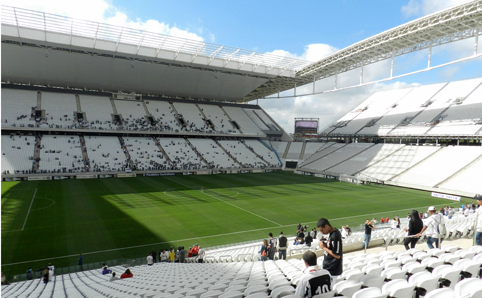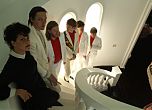
Be in no doubt that football reigns in Brazil, nor that São Paulo is the proud birthplace of the sport in the country, all thanks to one Charles Miller. The son of a Scottish father and a Brazilian mother, Miller brought two footballs, a pair of boots, a set of team kits and the all-important rule book back from a trip to the UK – a trip which would go on to spark the explosion of football in Brazil and culminate in São Paulo hosting the World Cup opener on 12 June.
It was around the time that Miller returned from the UK, at the turn of the the last century, that São Paulo’s most famous clubs became established – clubs that would go on to shower the city in world-conquering glory in decades to come. Corinthians was founded in 1910 by Italian and Spanish immigrants; Palmeiras, originally named ‘Palestra Itália’, was set up in 1914 by Italian immigrants; and in 1935, dissidents from the elitist Clube Paulistano formed São Paulo, one of the biggest modern-day teams in the country.
Known as ‘Itaquerão’ locally after the neighbourhood of Itaquera in which it’s located, São Paulo’s ultra-modern Arena Corinthians – named after the team that will call it home after the World Cup – is set to be called the ‘Arena de São Paulo’ for the duration of the World Cup, in FIFA’s official literature. But whatever the moniker, the stadium’s construction looks to have provided São Paulo with a stadium worthy of one of the city’s three main teams.
With a striking, open-sided design, the Arena, designed by the Rio de Janeiro architect Aníbal Coutinho, incorporates cutting-edge technology – and one of the biggest television screens in the world, measuring 170m x 20m and featuring over 200,000 LED lights – to deliver a new landmark worthy of international football.
Construction on the stadium began in October 2010, in a build that has not been without its problems, including a tragic accident that killed two construction workers, when a crane fell as the roof was being installed in November 2013.
Given the honour of hosting the 2014 FIFA World Cup’s opening game, the stadium will receive 65,000 fans into its air-conditioned public spaces, for each of the six matches that will be played there during the tournament. Its capacity will drop afterwards, with the removal of about 20,000 temporary seats.
As the Brazilian team gears up for the Cup, dreaming of becoming FIFA World Cup champions for what would be the sixth time – an unprecedented feat for any country – fans will expect nothing short of a resounding victory on their home grounds. An auspicious start for Brazil against Croatia at Arena Corinthians on 12 June would set the tone nicely – for the team and the whole of the country.
Getting There
The quickest and easiest way to get to the Arena Corinthians stadium is by taking the metro’s Red line 3 (‘Vermelha’) or the CPTM train line 11 (‘Coral’) to Corinthians-Itaquera station, in east São Paulo. From the station, it’s an 800m walk to the stadium. Anyone planning to go by taxi, bus or car, be warned that heavy traffic will likely make for a far lengthier journey.
Fan Fest
If you missed out on stadium tickets, head for downtown’s wide pedestrian valley, Vale do Anhangabaú (Metrô 3, Anhangabaú), where SP’s Fan Fest will be taking place. All the matches featuring Brazil are set to be shown there, as are the semi-finals and the final, plus performances by Brazilian musicians, including one by the axé singer, Claudia Leitte, during the São Paulo semi-final (9 July).



